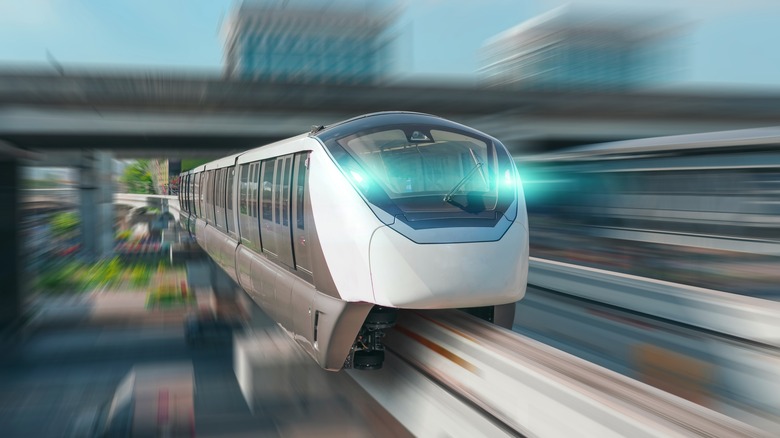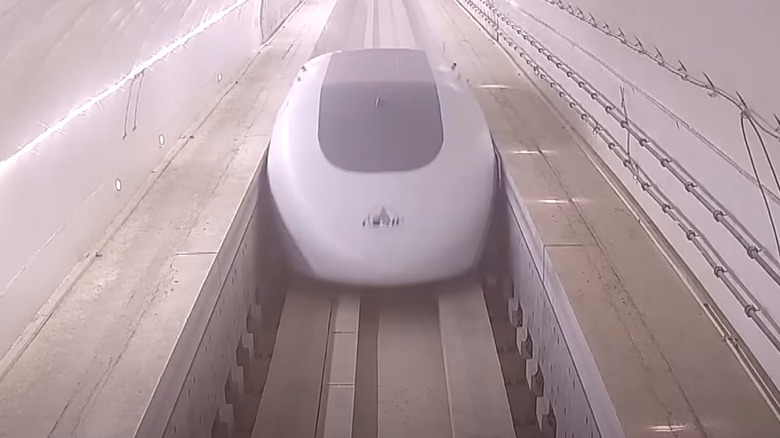China's New Maglev Train Just Reached An Impressive Speed Record
Magnetic levitation, or maglev, technology has been around since the 1940s, but it's only now coming into focus as a means of high-speed transit. There are several maglev train systems spread throughout Asia, and one of the countries at the forefront of the technology is the People's Republic of China. China has been using maglev trains since the debut of the Shanghai maglev train in 2004.
That train only travels 19 miles, but it manages the distance in seven minutes and 20 seconds, reaching speeds of 268 mph. In 2021, China achieved a speed of 372 mph with another system. While that's incredibly fast, China isn't satisfied with a single train line and is actively working to improve the technology to make high-speed trains more available to its citizens. To that end, China has set its sights on creating the world's first 1,000 km/h maglev train, and in August 2024, it hit a significant milestone.
During a pivotal test of China's ingenuity in maglev train design, its ultra-high-speed (UHS) maglev transportation system reached the breakneck speed of 621 mph (1,000 km/h). This was the first full-size demonstration of the technology involved, which is different from current maglev trains used in Japan, South Korea, and also China. China's newest UHS maglev train design is similar in concept to Elon Musk's proposed Hyperloop system, though with several differences.
The demonstration and technology at play
China's newest maglev system doesn't utilize an open track like others. Instead, it features a low-vacuum tube system to reduce friction, which is similar to the Hyperloop design. Maglev trains are levitated via powerful superconducting electromagnets, which also propel the trains forward. This eliminates ground contact friction, but the trains are still subjected to friction from the air. Placing the rails within a low-vacuum tube removes the air, further reducing friction.
A novel ultra-high-speed (UHS) maglev transportation system recently completed a demonstration test in North #China's Shanxi province, marking another progress for the maglev #train that can travel at speeds of up to 1,000 km per hour. #QualityGrowth #technology pic.twitter.com/YTg827okrg
— China Daily (@ChinaDaily) August 7, 2024
This makes the maglev UHS system behave as if it were flying through space, though there is indeed still some friction involved. Most of the air was pumped out of the vacuum tube and the structure successfully maintained integrity throughout the demonstration. The superconducting maglev vehicle moved on a special track used in the demonstration that stretched for 1.24 miles, and throughout the demonstration, the vehicle maintained its trajectory precisely as anticipated, marking a successful test.
The vehicle reached its intended speed of 621 mph and maintained it throughout the test. This proved the viability of a long-distance vacuum environment. Now that the proof of concept test has proven successful, China Aerospace Science and Industry Corporation Limited and Shanxi will push forward with further development. Eventually, China plans to utilize the new UHS maglev train system for transit between its largest cities, cutting commuting time down across highly populated areas and likely taking the lead with the world's fastest passenger train.

